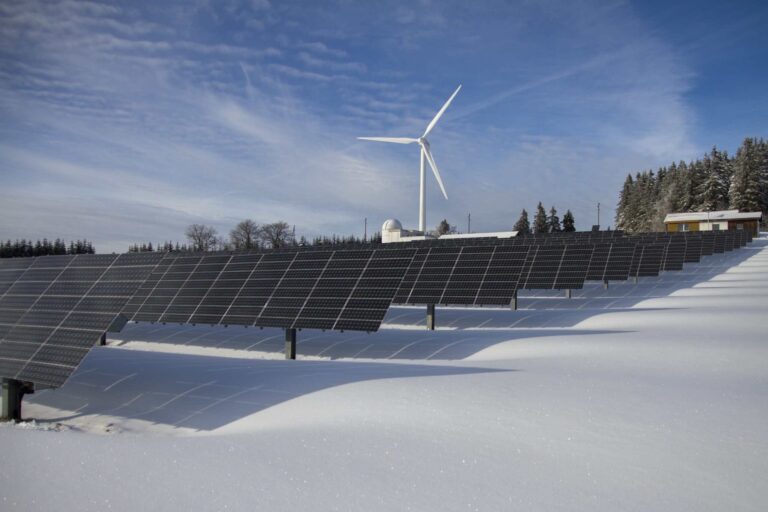The war in Ukraine has triggered and exacerbated one of the deepest energy crises of the last century. At the very time when half the world was reasoning and investing resources for the much-talked-about ecological transition.
Amid cuts in Russian gas supplies, oil embargoes and rationalization of consumption, however, there is also room for “good news”. That it, the record momentum recorded by renewable energy.
According to the IEA, the International Energy Agency, the green sources sector has reached unprecedented levels. With total global capacity set to nearly double in the next five years. Will the long-awaited overtaking of fossil fuels therefore be accomplished?
Table of Contents
The record momentum of renewables
Overtaking coal as the main source of global electricity generation is expected to happen by early 2025. A revolutionary scenario for combating climate change. Which would make it more plausible to keep global warming within the 1.5°C threshold.
Over the period 2022-2027, renewables are expected to grow by nearly 2,400 GW. Equal to the entire power capacity currently installed by China. This is a jump of 85 percent over the previous five years. And nearly 30 percent more than predicted in last year’s report. It is, in short, the largest upward revision ever. The “green” share in the energy mix is also expected to increase by 10 percentage points over the forecast period, reaching 38 percent in 2027.
The scenario to 2025: the exploit of photovoltaics
In the next five years, electricity generated from wind and solar photovoltaics will triple from today’s levels, providing nearly 20 percent of global power generation.
In particular, the installed power capacity of the photovoltaic sector is poised to become the largest in the world, surpassing that of coal in 2027. And it continues to attract investment despite record high commodity prices. Still, remaining the least expensive alternative for generating electricity in most countries.
The report also predicts an acceleration of solar panel installations on the roofs of homes and businesses, helping consumers reduce their electricity and gas bills. Global wind capacity has nearly doubled over the forecast period, with offshore projects accounting for one-fifth of the growth. Together, wind and solar will account for more than 90 percent of the renewable energy capacity that will be added in the next five years.
In contrast, other dispatchable renewables-including hydropower, bioenergy, geothermal and concentrating solar-will see much smaller increases.
Who will lead the transition
In Europe, the most virtuous countries have been the same for a few years. Although other states such as Italy (around 38 percent for now, the European average) are growing rapidly. The first place in the ranking of energy consumed produced by renewables is occupied by:
- Austria (78%)
- Sweden (75%)
- Denmark (65%)
- Portugal (58%)
- Croatia and Latvia (53%)
Iceland and Norway, which are not part of the 27 EU member states but play a league of their own in every sense of the word, deserve special mention. As they have even produced more energy than they consume.
Moving beyond the borders of the Old Continent, the growth of renewables is (and will be) driven by nations that traditionally base their economies on fossil fuels. Namely China, the United States and India. The global energy crisis has prompted these major powers to implement policies and introduce regulatory and market reforms faster than expected.
Beijing, in particular, seems to be betting with great conviction on green. Taking a look at the prospectus of the 14th Five-Year Plan, China expects to take on nearly half of the new global additions of renewable energy capacity over the period 2022-2027.
An even greater record
The IEA report also presents another, decidedly more “accelerated” scenario, in which renewable energy capacity grows by an additional 25 percent over the main forecast. Provided, however, is a concrete and profound reconversion of the energy market.
If the advanced economies want to achieve such a goal, they will have to revolutionize the regulatory and permitting framework. Which is currently too rigid and stringent, and enable a faster penetration of electricity from renewable sources in the heating and transportation sectors.
As far as the European Union alone is concerned, even faster deployment of solar and wind power requires first and foremost a strong and convinced political commitment. In particular, there would need to be a mechanism shared by all member states for simplifying and reducing permitting times. This improving auction design, and providing better visibility on auction programs. Not to mention the need to reform the incentive system for supporting rooftop solar.
Read also: Solar roads: pros and cons of the first experimentations of photovoltaic panels instead of asphalt












